Influences of Material Selection, Infill Ratio, and Layer Height in the 3D Printing Cavity Process on the Surface Roughness of Printed Patterns and Casted Products in Investment Casting
Abstract
1. Introduction
2. Materials and Methods
2.1. Materials
2.2. Preparations
- Preparation of 3D–printed patterns. First, the patterns were designed using the 3D AutoCAD software (Autodesk, San Francisco, CA, USA) (Figure 2a). Then, the designs were exported into stereo lithography format (STL) files. Next, they were printed by 3D printers. To prepare the PVB and PLA patterns used for surface roughness tests and IC casting, an FDM printer (supplied by Nam Liem Trading Service Co., Ltd., Ho Chi Minh City, Vietnam) was used with the following parameters: a bed temperature of 60 °C, a nozzle temperature of 210 °C, a printing speed of 60 mm/s, a wall thickness of 0.8 mm, a layer height from 0.06 to 0.6 mm, a fill density of 0%, a grid infill pattern, a non-support material, and a skirt–type build plate (Figure 2b,c). An SLA printer (Formlabs, Somerville, MA, USA) was employed to fabricate the CW pattern with setting layer thicknesses of 0.025 mm and 0.05 mm. Other parameters were used as defaults, which produced the solid pattern (Figure 2d). For the tensile tests, the sample was designed based on ASTD D638 (Figure 3a) and printed by the FDM printer using PLA with the parameters mentioned above, a fixed layer height of 0.06 mm, and variations of infill from 0 to 100% (Figure 3b).
- Preparation of shell molds for IC casting. The printed patterns were repeatedly coated (approximately 4 times) with ceramic as per the sequential process: dipped in a ceramic slurry consisting of 16.86 wt% of colloidal silica 830, 83.3 wt% of zircon flour, 0.1 wt% of de–foaming, and 0.06 wt% of degassing; then covered with ceramic particles (zircon 22 s and zircon 35 s); subsequently dried at 25 °C and humidity of 70%. After that, the plastic patterns were removed from the outer shell in a chamber furnace at 900 °C to obtain the mold cavities. Finally, the molten metal was cast into the cavities (Figure 1).
2.3. Methods
- Roughness surface measurements. To evaluate the surface quality of both the printed (PLA, PVB, and CW) and casted parts, the surface roughness (Ra) was measured using a Mitutoyo SJ–201 roughness tester (Mitutoyo, Kawasaki, Kanagawa, Japan) with a cutoff length of 7.5 mm (Figure S1a).
- Tensile test. A tensile test Shimazu 20KN machine (Shimazu Nakagyo, Kyoto, Japan) was used for the tensile test. The sample was clamped on the machine with a gauge length of 50 mm. The upper clamp moved upward at 5 mm/min speed until the sample broke (Figure S1b).
3. Results and Discussion
3.1. Evaluation of PLA–, PVB–, and CW–Printed Patterns for Fabricating Metallic Casting Mold Cavities
3.2. Effect of Layer Height on the Roughness of 3D Printed and Casted Parts
3.3. Effect of Infill Printing on Mechanical Properties of PLA Material
4. Conclusions
Supplementary Materials
Author Contributions
Funding
Institutional Review Board Statement
Informed Consent Statement
Data Availability Statement
Acknowledgments
Conflicts of Interest
References
- Singh, J.; Singh, R.; Singh, H.; Verma, A.K. Investigations for mechanical properties and biocompatibility of SS-316L implant prepared as rapid investment casting for batch production. Sādhanā 2018, 43, 76. [Google Scholar] [CrossRef]
- Cheah, C.; Chua, C.; Lee, C.; Feng, C.; Totong, K. Rapid prototyping and tooling techniques: A review of applications for rapid investment casting. Int. J. Adv. Manuf. Technol. 2004, 25, 308–320. [Google Scholar] [CrossRef]
- Akash, V.; Omkar, M.; Aman, R.; Tejas, D.; Shivam, G.; Mayur, S. Rapid tooling in investment casting: Investigation on surface finish of mould produced with 3D printed patterns. In Proceedings of the 3rd International Conference on Advancements in Aeromechanical Materials for Manufacturing, Istanbul, Turkey, 27–29 June 2020. [Google Scholar]
- Kalpakjian, S.; Schmid, S.R. Manufacturing Engineering and technology, 7th ed.; Pearson education South Asia Pte Ltd.: Singgapore, 2014. [Google Scholar]
- Kumar, P.; Ahuja, I.S.; Singh, R. Application of fusion deposition modelling for rapid investment casting–a review. Int. J. Mater. Eng. Innov. 2012, 3, 204–227. [Google Scholar] [CrossRef]
- Dong, Y.W.; Li, X.L.; Zhao, Q.; Yang, J.; Dao, M. Modeling of shrinkage during investment casting of thin-walled hollow turbine blades. J. Mater. Process. Technol. 2017, 244, 190–203. [Google Scholar] [CrossRef]
- Krutiš, V.; Novosad, P.; Záděra, A.; Kaňa, V. Requirements for Hybrid Technology Enabling the Production of High-Precision Thin-Wall Castings. Materials 2022, 15, 3805. [Google Scholar] [CrossRef] [PubMed]
- Körber, S.; Völkl, R.; Glatzel, U. 3D printed polymer positive models for the investment casting of extremely thin-walled sin-gle crystals. J. Mater. Process. Technol. 2021, 293, 117095. [Google Scholar] [CrossRef]
- Ganeshkumar, S.; Kumar, S.D.; Magarajan, U.; Rajkumar, S.; Arulmurugan, B.; Sharma, S.; Li, C.; Ilyas, R.A.; Badran, M.F. Investigation of Tensile Properties of Different Infill Pattern Structures of 3D-Printed PLA Polymers: Analysis and Validation Using Finite Element Analysis in ANSYS. Materials 2022, 15, 5142. [Google Scholar] [CrossRef]
- Chohan, J.S.; Kumar, R.; Yadav, A.; Chauhan, P.; Singh, S.; Sharma, S.; Li, C.; Dwivedi, S.P.; Rajkumar, S. Optimization of FDM Printing Process Parameters on Surface Finish, Thickness, and Outer Dimension with ABS Polymer Specimens Using Taguchi Orthogonal Array and Genetic Algorithms. Math. Probl. Eng. 2022, 2022, 2698845. [Google Scholar] [CrossRef]
- Nagarajan, V.; Mohanty, A.K.; Misra, M. Perspective on Polylactic Acid (PLA) based Sustainable Materials for Durable Applications: Focus on Toughness and Heat Resistance. ACS Sustain. Chem. Eng. 2016, 4, 2899–2916. [Google Scholar] [CrossRef]
- Kumar, P.; Khan, N.; Kumar, D. Polyvinyl Butyral (PVB), Versetile Template for Designing Nanocomposite/Composite Mate-rials: A Review. Green Chem. Technol. Lett. 2016, 2, 185. [Google Scholar] [CrossRef]
- Fedorov, K.; Ravindran, C.; Fayazbakhsh, K. Effects of process parameters on friability and surface quality in the rapid investment casting process. Int. J. Adv. Manuf. Technol. 2022, 1–12. [Google Scholar] [CrossRef]
- Badanova, N.; Perveen, A.; Talamona, D. Study of SLA Printing Parameters Affecting the Dimensional Accuracy of the Pattern and Casting in Rapid Investment Casting. J. Manuf. Mater. Process. 2022, 6, 109. [Google Scholar] [CrossRef]
- Guachetá, L.; Stevens, C.D.; Tamayo Cardona, J.A.; Murgueitio, R. Comparison of marginal and internal fit of pressed lithium disilicate veneers fabricated via a manual waxing technique versus a 3D printed technique. J. Esthet. Restor. Dent. 2020, 34, 715–720. [Google Scholar] [CrossRef]
- Pagac, M.; Hajnys, J.; Ma, Q.-P.; Jancar, L.; Jansa, J.; Stefek, P.; Mesicek, J. A Review of Vat Photopolymerization Technology: Materials, Applications, Challenges, and Future Trends of 3D Printing. Polymers 2021, 13, 598. [Google Scholar] [CrossRef]
- Kumar, P.; Ahuja, I.S.; Singh, R. Effect of process parameters on surface roughness of hybrid investment casting. Prog. Addit. Manuf. 2016, 1, 45–53. [Google Scholar] [CrossRef]
- Dezaki, M.L.; Ariffin, M.K.A.M. The Effects of Combined Infill Patterns on Mechanical Properties in FDM Process. Polymers 2020, 12, 2792. [Google Scholar] [CrossRef] [PubMed]
- Buj-Corral, I.; Domínguez-Fernández, A.; Durán-Llucià, R. Influence of print orientation on surface roughness in fused depo-sition modeling (FDM) processes. Materials 2019, 12, 3834. [Google Scholar] [CrossRef] [PubMed]
- Singh, M.; Sharma, S.; Muniappan, A.; Pimenov, D.Y.; Wojciechowski, S.; Jha, K.; Dwivedi, S.P.; Li, C.; Królczyk, J.B.; Walczak, D.; et al. In Situ Micro-Observation of Surface Roughness and Fracture Mechanism in Metal Microforming of Thin Copper Sheets with Newly Developed Compact Testing Apparatus. Materials 2022, 15, 1368. [Google Scholar] [CrossRef]
- Singh, M.; Garg, H.K.; Maharana, S.; Yadav, A.; Singh, R.; Maharana, P.; Nguyen, T.V.T.; Yadav, S.; Loganathan, M.K. An Experimental Investigation on the Material Removal Rate and Surface Roughness of a Hybrid Aluminum Metal Matrix Composite (Al6061/SiC/Gr). Metals 2021, 11, 1449. [Google Scholar] [CrossRef]
- Perea-Lowery, L.; Gibreel, M.; Vallittu, P.K.; Lassila, L. Evaluation of the mechanical properties and degree of conversion of 3D printed splint material. J. Mech. Behav. Biomed. Mater. 2021, 115, 104254. [Google Scholar] [CrossRef]
- Jiang, Y.; Zong, P.; Tian, B.; Xu, F.; Tian, Y.; Qiao, Y.; Zhang, J. Pyrolysis behaviors and product distribution of Shenmu coal at high heating rate: A study using TG-FTIR and Py-GC/MS. Energy Convers. Manag. 2019, 179, 72–80. [Google Scholar] [CrossRef]
- Ridgway, J.S.; Hull, J.B.; Gentle, C.R. A Prime approach for the moulding of conduit ceramic parts. J. Mater. Process. Technol. 2002, 133, 181–188. [Google Scholar] [CrossRef]
- Lee, K.; Blackburn, S.; Welch, S.T. Adhesion tension force between mould and pattern wax in investment castings. J. Mater. Process. Technol. 2015, 225, 369–374. [Google Scholar] [CrossRef]
- Vyas, A.V.; Pandya, M.P.; Sutaria, M.P. Effect of mixing proportion and mixing time on primary slurry retention and surface roughness of investment casting shells. In Proceedings of the 6th International Conference on Recrystallization and Grain Growth, Pennsylvania, PA, USA, 17–21 July 2016. [Google Scholar]
- Sammaiah, P.; Rushmamanisha, K.; Praveenadevi, N.; Reddy, I.R. The influence of process parameters on the surface roughness of the 3d printed part in MMM process. Conf. Ser. Mater. Sci. Eng. 2020, 981, 042021. [Google Scholar] [CrossRef]
- Minh, P.S.; Nguyen, V.-T.; Nguyen, V.T.; Uyen, T.M.T.; Do, T.T.; Nguyen, V.T.T. Study on the Fatigue Strength of Welding Line in Injection Molding Products under Different Tensile Conditions. Micromachines 2022, 13, 1890. [Google Scholar] [CrossRef] [PubMed]
- Bemblage, O.; Karunakar, B.D. A study on the blended wax patterns in investment casting process. In Proceedings of the World Congress on Engineering, London, UK, 6–8 July 2011; Volume 1. [Google Scholar]
- Bucio, A.; Moreno-Tovar, R.; Bucio, L.; Espinosa-Dávila, J.; Anguebes-Franceschi, F. Characterization of Beeswax, Candelilla Wax and Paraffin Wax for Coating Cheeses. Coatings 2021, 11, 261. [Google Scholar] [CrossRef]
- Huynh, T.T.; Nguyen, T.V.; Nguyen, Q.M.; Nguyen, T.K. Minimizing warpage for macro-size fused deposition modeling parts. CMC Comput. Mater. Contin. 2021, 68, 2913–2923. [Google Scholar]
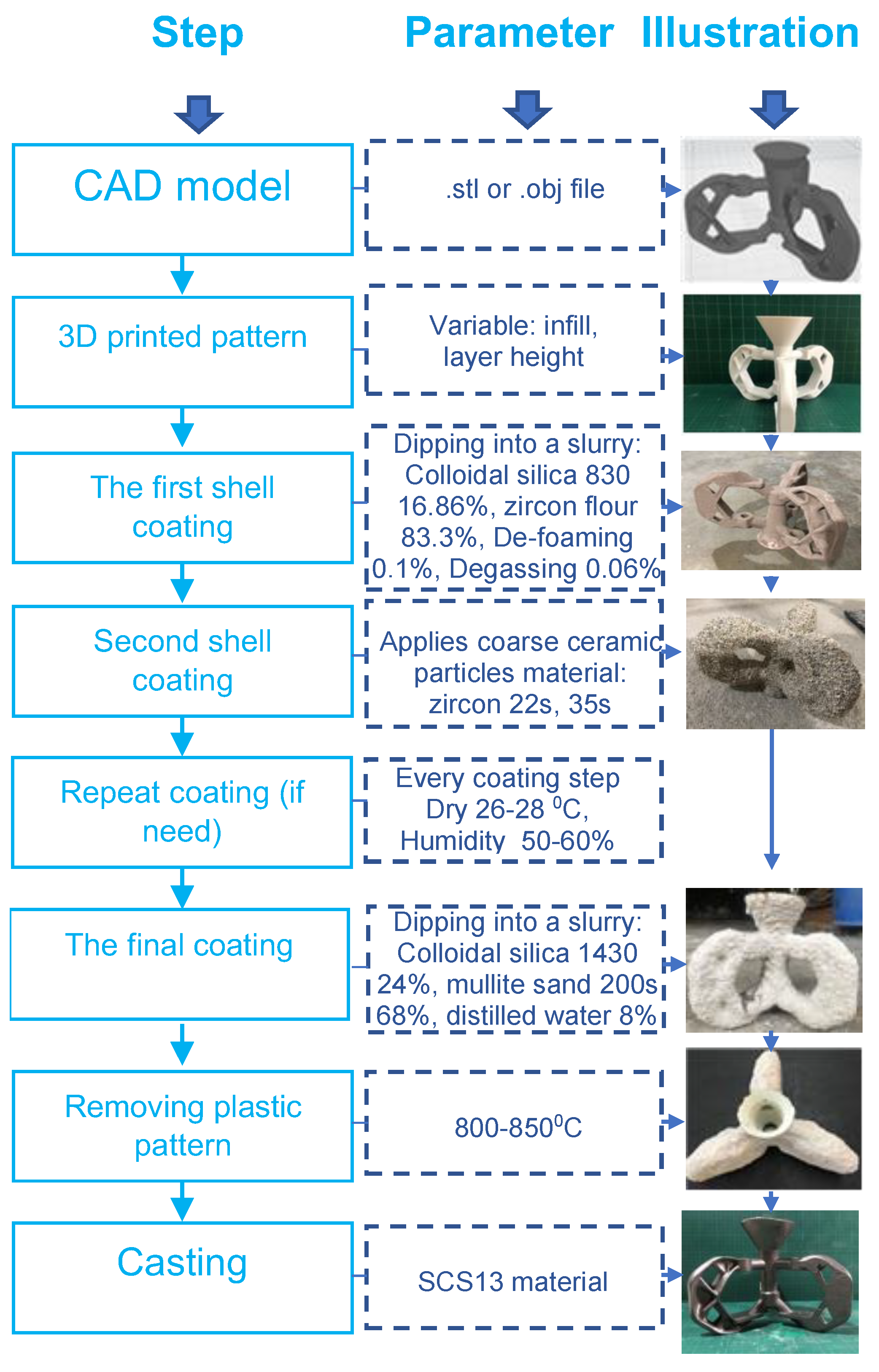

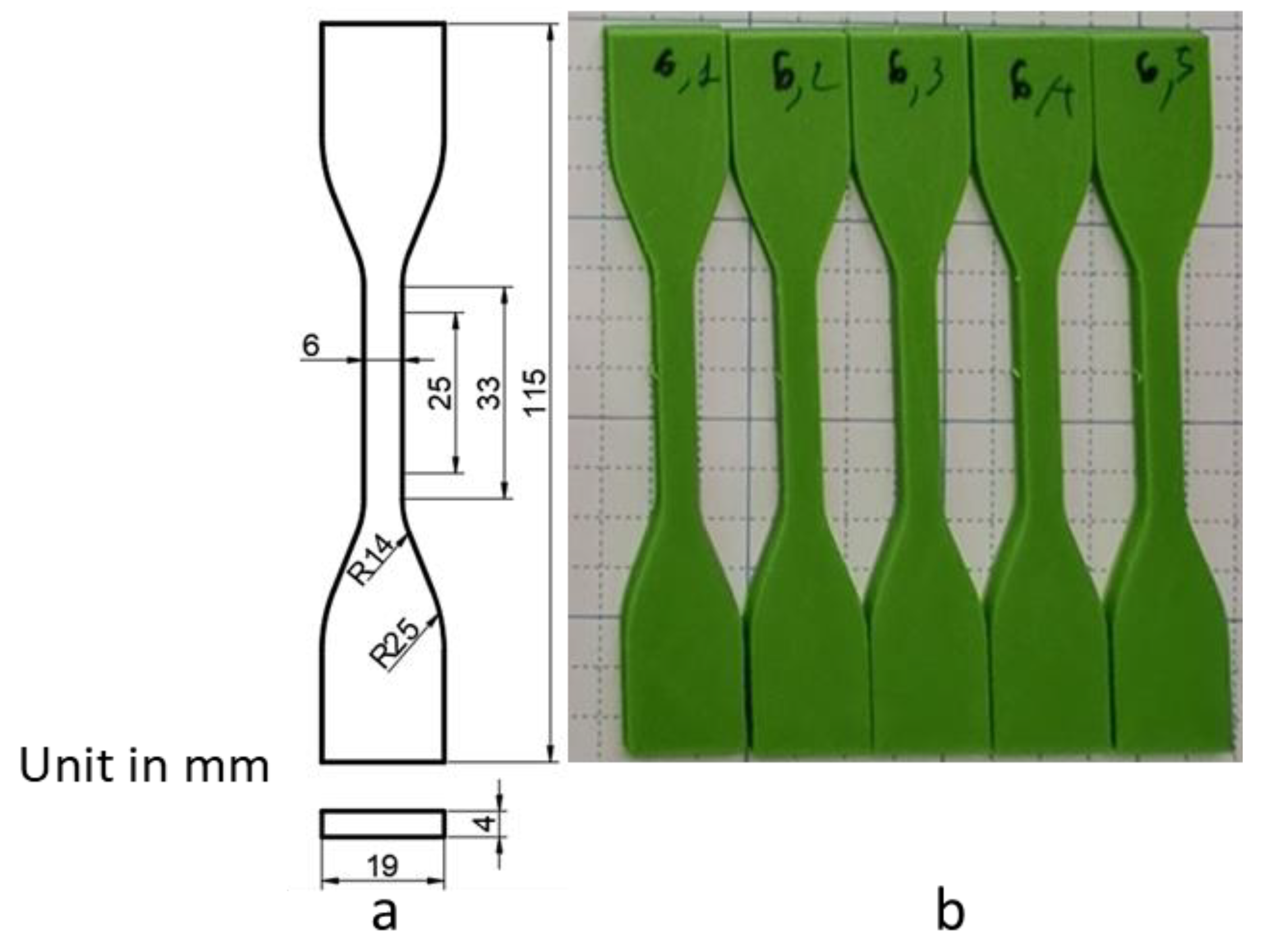

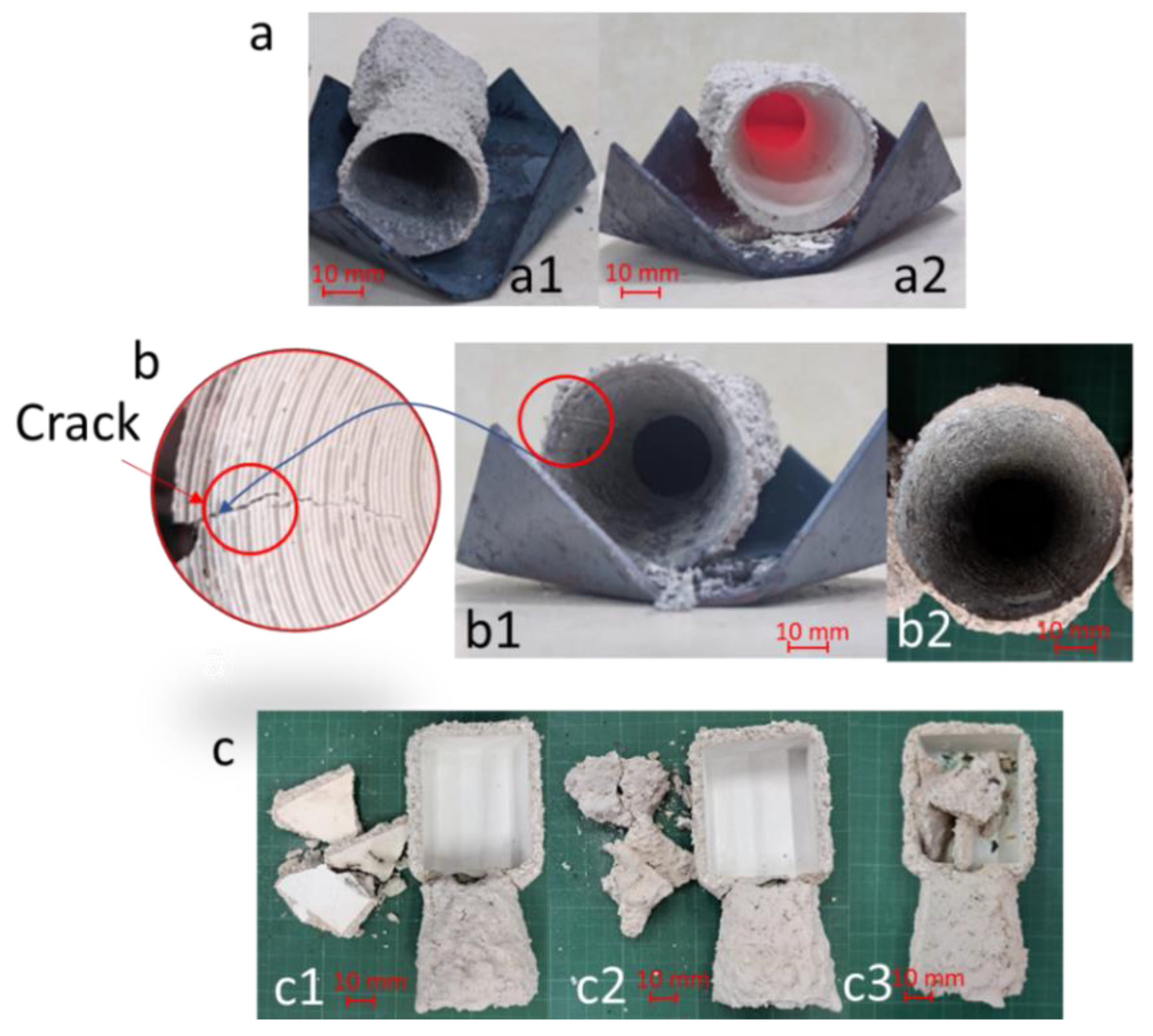
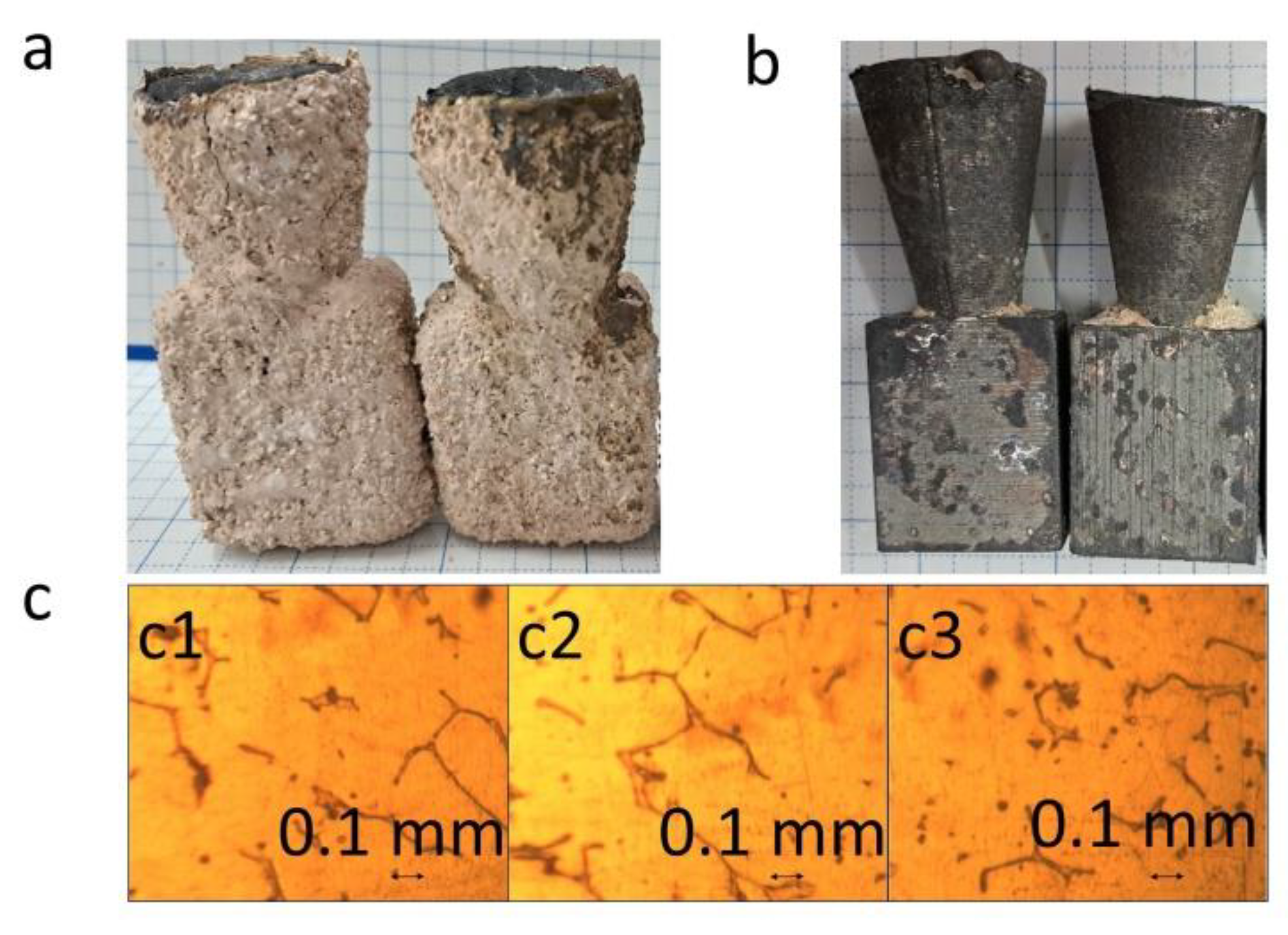
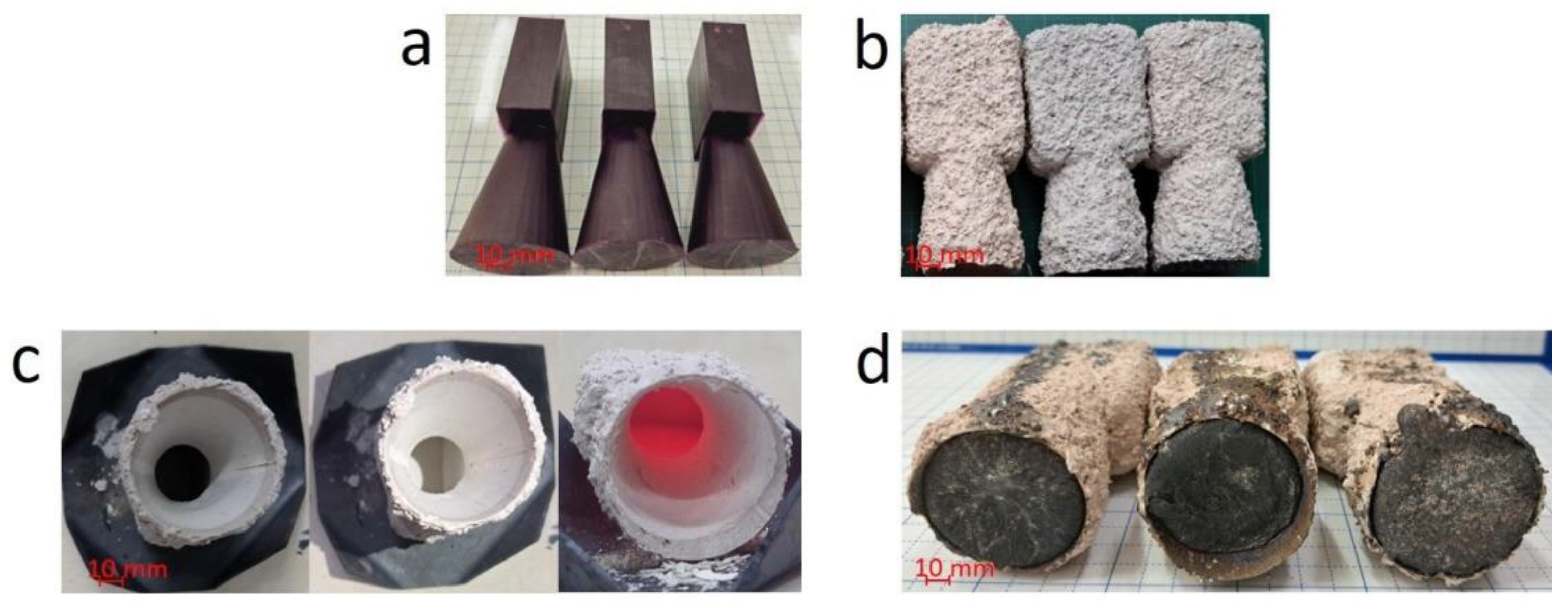

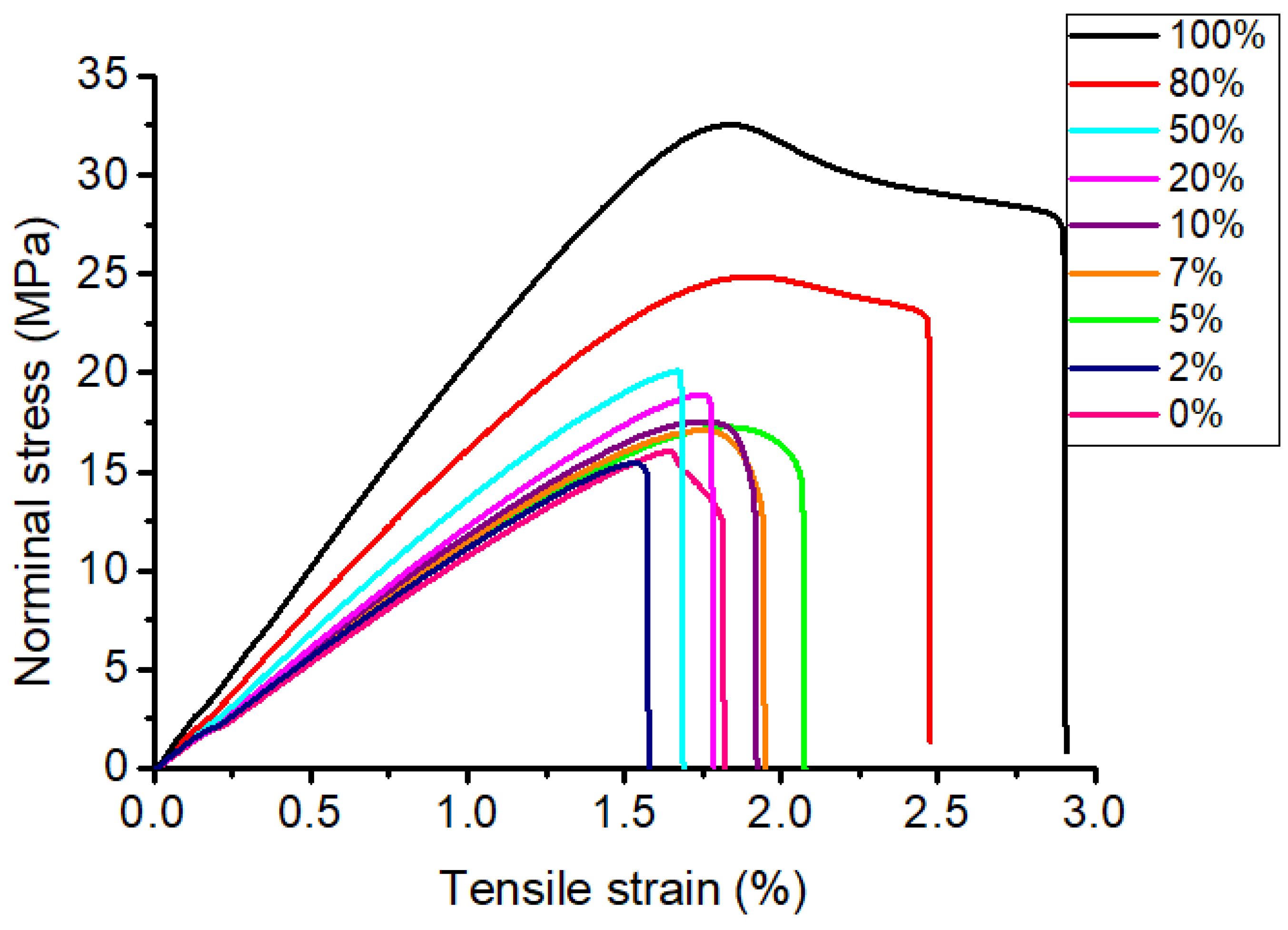
| Layer Height (mm) | 3D Printed Sample | Casted Sample | ||
|---|---|---|---|---|
| Roughness (μm) | OMI | Roughness (μm) | OMI | |
| 0.06 | 6.1 |  | 6.4 |  |
| 0.1 | 8 |  | 10 |  |
| 0.15 | 10.6 |  | 11.5 |  |
| 0.2 | 15.4 |  | 15.6 |  |
| 0.3 | 24.7 |  | 21.7 |  |
| 0.4 | 33.6 |  | 21.5 |  |
| 0.6 | 42.8 |  | 26.5 |  |
| Items | Infill (%) | ||||||||
|---|---|---|---|---|---|---|---|---|---|
| 0 | 2 | 5 | 7 | 10 | 20 | 50 | 80 | 100 | |
| Tensile strength (MPa) | 16.72 | 16.10 | 17.49 | 17.18 | 17.37 | 19.02 | 20.14 | 25.12 | 32 |
| Tensile strain (%) | 1.92 | 1.74 | 2.02 | 2.04 | 1.99 | 1.98 | 1.73 | 2.57 | 2.54 |
Disclaimer/Publisher’s Note: The statements, opinions and data contained in all publications are solely those of the individual author(s) and contributor(s) and not of MDPI and/or the editor(s). MDPI and/or the editor(s) disclaim responsibility for any injury to people or property resulting from any ideas, methods, instructions or products referred to in the content. |
© 2023 by the authors. Licensee MDPI, Basel, Switzerland. This article is an open access article distributed under the terms and conditions of the Creative Commons Attribution (CC BY) license (https://creativecommons.org/licenses/by/4.0/).
Share and Cite
Nguyen, T.T.; Tran, V.T.; Pham, T.H.N.; Nguyen, V.-T.; Thanh, N.C.; Thi, H.M.N.; Duy, N.V.A.; Thanh, D.N.; Nguyen, V.T.T. Influences of Material Selection, Infill Ratio, and Layer Height in the 3D Printing Cavity Process on the Surface Roughness of Printed Patterns and Casted Products in Investment Casting. Micromachines 2023, 14, 395. https://doi.org/10.3390/mi14020395
Nguyen TT, Tran VT, Pham THN, Nguyen V-T, Thanh NC, Thi HMN, Duy NVA, Thanh DN, Nguyen VTT. Influences of Material Selection, Infill Ratio, and Layer Height in the 3D Printing Cavity Process on the Surface Roughness of Printed Patterns and Casted Products in Investment Casting. Micromachines. 2023; 14(2):395. https://doi.org/10.3390/mi14020395
Chicago/Turabian StyleNguyen, Thanh Tan, Van Tron Tran, Thi Hong Nga Pham, Van-Thuc Nguyen, Nguyen Chi Thanh, Hong Minh Nguyen Thi, Nguyen Vu Anh Duy, Duy Nguyen Thanh, and Van Thanh Tien Nguyen. 2023. "Influences of Material Selection, Infill Ratio, and Layer Height in the 3D Printing Cavity Process on the Surface Roughness of Printed Patterns and Casted Products in Investment Casting" Micromachines 14, no. 2: 395. https://doi.org/10.3390/mi14020395
APA StyleNguyen, T. T., Tran, V. T., Pham, T. H. N., Nguyen, V.-T., Thanh, N. C., Thi, H. M. N., Duy, N. V. A., Thanh, D. N., & Nguyen, V. T. T. (2023). Influences of Material Selection, Infill Ratio, and Layer Height in the 3D Printing Cavity Process on the Surface Roughness of Printed Patterns and Casted Products in Investment Casting. Micromachines, 14(2), 395. https://doi.org/10.3390/mi14020395







